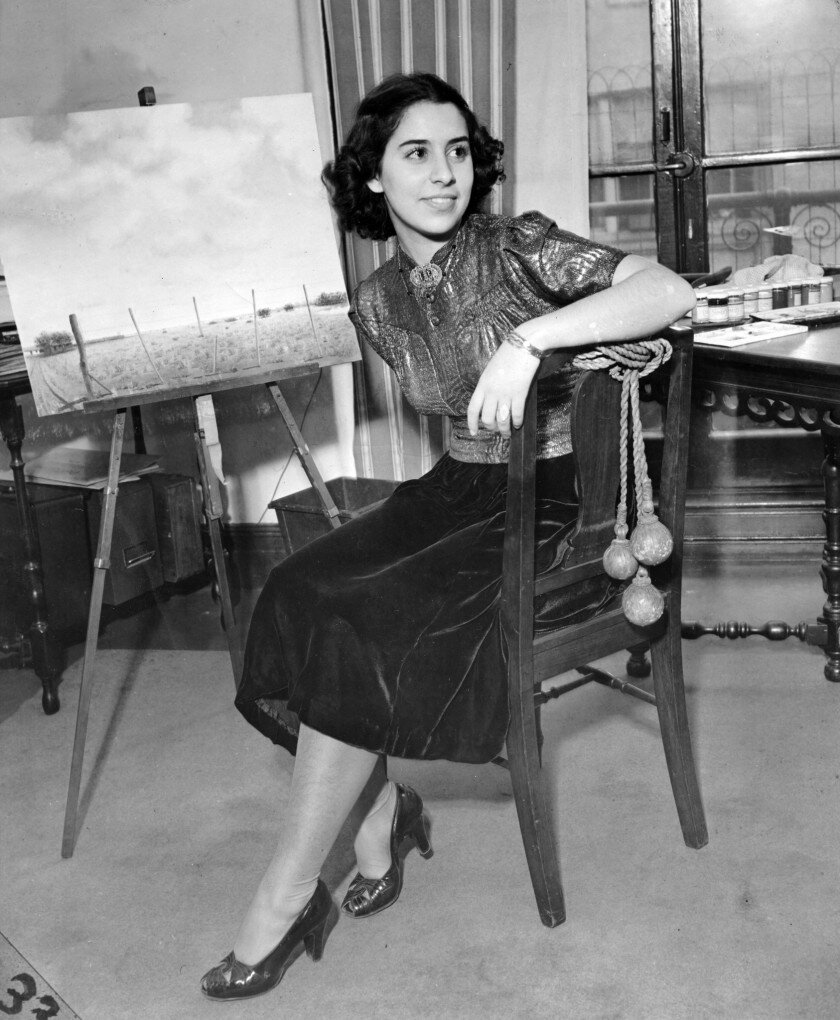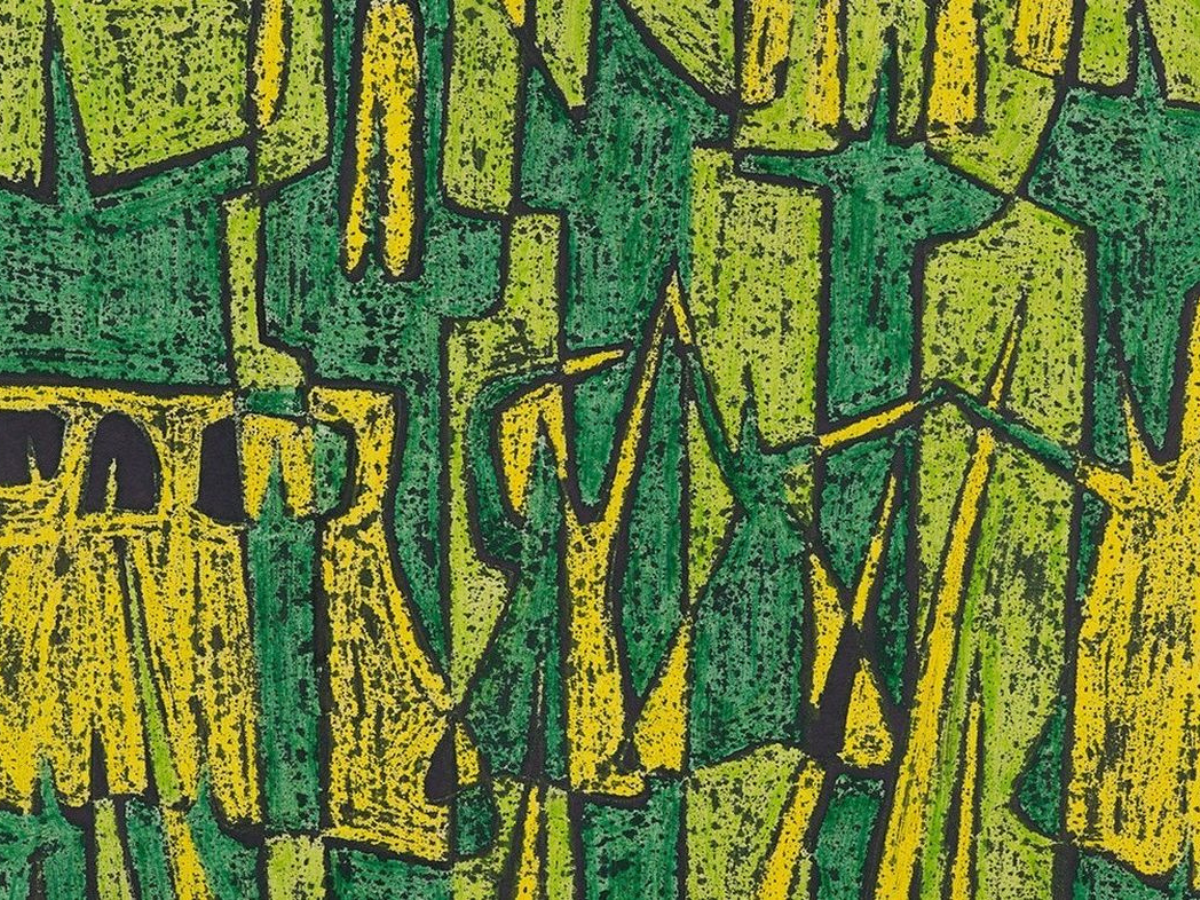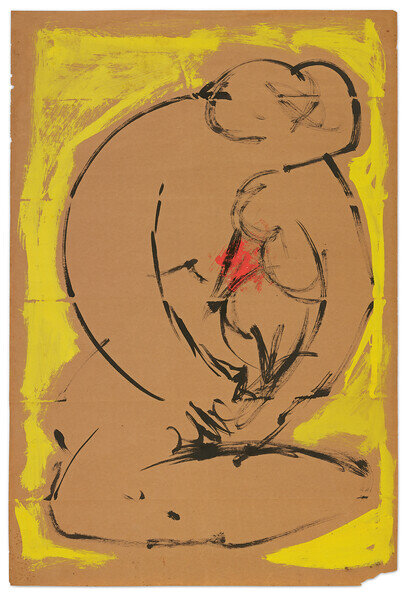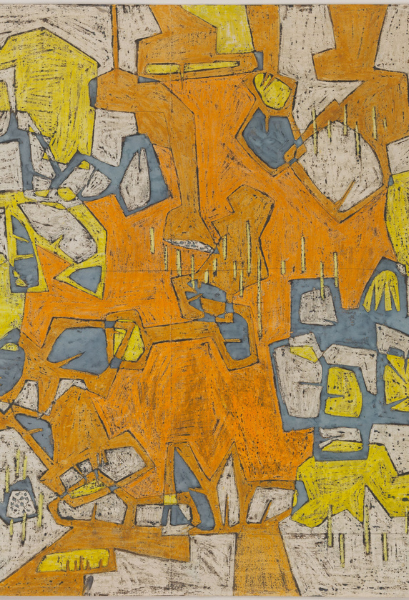Critically Acclaimed in Her 90’s - Modernist Luchita Hurtado
Photo from The Telegraph
The artist Luchita Hurtado lived until nearly one hundred years old, passing away at the height of critical acclaim for her work. Despite two marriages to modern artists and friendships with countless art world luminaries, for eight decades she painted, drew, and created, unrecognized or celebrated as an artist in her own right by the greater art community. Seeing that brilliant and talented female contemporaries like her friend, the artist Frida Kahlo, were regarded as just the amateur wives of their artist husbands, Luchita was wary of sharing her work with anyone. She worked steadily and consistently on her own, creating art to meet her own need for self expression.
In our continuing series exploring the lives of modern artists, we take inspiration from Luchita’s lifelong dedication and commitment to her art, her willingness to ever evolve, and the perspectives she has contributed to modern art.
Photo from the LA Times
Born in Venezuela in 1920, Luchita moved to the United States at eight years old. Self-determined from a young age, she secretly took fine art classes instead of the sewing lessons her mother thought she was attending. She learned color mixing from her friend, the artist Rufino Tamayo, who filled her New York home with his imaginative games and musings on color and art, and she studied under Bob Hale at New York’s Art Students League.
Photo from Luchita Hurtado & Park View Gallery Los Angeles via artnews
Luchita’s first marriage, at 18, ended when her husband deserted her and their two children in New York City. To support herself and her kids, she found work making fashion illustrations for Vogue magazine, and window murals for a Lord & Taylor department store. These were creative jobs, but nothing like a professional art career, and as a single working mother she had no time to pursue one. At night while her children slept, or in snatched moments throughout the day, she found time to create. Painting was a daily diary, as integral and irresistible as breathing. As she said in a 1995 Smithsonian Institute interview, “Painting is a need …. ”.
Photo from Luchita Hurtado & Park View Gallery Los Angeles
Photo from Luchita Hurtado & Park View Gallery Los Angeles
Photo from wikiart.org
Photo from artnews.com
While living and working in 1940s New York City, Luchita moved in modern art circles that included Mark Rothko, Willem de Kooning, Robert Motherwell, André Breton, Frida Kahlo, John Cage, and Merce Cunningham, among other talented and well-known creative minds. Through her friend, the sculptor Isamu Noguchi, she met Wolfgang Paalen, a Surrealist painter, poet, and founding member of the Dynaton art movement (which combined influences of Surrealism and Indigenous art, with the aim to explore the as yet unimagined), and he quickly became her second husband.
Photo from artnews.com
She and her children joined Paalen in Mexico City’s vibrant and flourishing Surrealist art scene, where she traveled with him throughout the country, researching Pre-Columbian art and culture, and collecting artifacts and textiles. In her first experiment with photography, she documented a journey of theirs to visit the giant stone head sculptures of the Olmec people. These photos were later published in an issue of the French art journal, Cahiers d’Art, alongside an article written by Paalen.
Photo courtesy of the Hurtado Estate, via California Art Review
Their life in Mexico ended when one of Luchita’s young sons tragically passed away. In grief, she moved the family up to northern California, where the sighting of whales passing through the water was seen as an omen that California was the right place to be. Even as her marriage to Paalen fell apart, she stayed on, moving down to Los Angeles, where she would keep a home for the rest of her life. She married the Abstractionist artist Lee Mullican, Paalen’s contemporary in the Dynaton art scene, and the marriage lasted more than 40 years. They had two sons together, separate art studios, and houses in Los Angeles and Taos, New Mexico, that they moved between.
Luchita’s art explored various materials and techniques. Watercolors mixed with crayons and ink made graphic, abstract pieces, and oils were used to paint Surrealist landscapes and self portraits.
Photo from artforum
Photo by Genevieve Hanson via Hauser & Wirth
Photo courtesy of Park View Gallery Los Angeles, Paul Soto
Photo from Hauser & Wirth
Photo courtesy of Luchita Hurtado artist & hauser & wirth, via LACMA & Genevieve Hanson
Some of her most iconic work is from her “I Am” series from the 1960s, where she captured her unadorned body in moments of stillness as it encountered the world around it. A Surrealist perspective turns her body into mountains, hills, valleys, and the sky itself. She said,“... [The body is] a landscape … the world, this is all you have … this is where you live." - 1995 Smithsonian interview.
Photo via nytimes.com
Photo from Serpentine Galleries
Photo from The Times UK
Photo via Serpentine Galleries & Hyperallergic
Other than a solo show in 1974 at The Women’s Building in Los Angeles, and participation in a few group shows, Luchita’s artwork was hardly ever shown. This changed in 2015 when her late husband’s art studio director came across her work in the archives of the estate. Struck by the pieces, he helped her to get her second ever solo show at the age of 95, at the Park View Gallery in Los Angeles. This show led to a flood of others, including highly praised exhibitions at LACMA and the Hammer Museum in Los Angeles, Hauser and Wirth in New York and Zurich, and the Serpentine Gallery in London.
This critical acclaim and massive appreciation for Luchita’s work was decades late in arriving. She’d been making her art for more than eighty years by then, but she enjoyed the surprising success. In her late 90s at the time, she was still creating new pieces. She never put her art career first, but said, “I don't think you lose much by not dedicating yourself entirely to painting. I think we have more time than we imagine.” For her, this was especially true. Luchita passed away at 99 years old, in the midst of her success, still excited about the new art she was creating, and what the next day would bring.
“I would tell you, or anybody, just work away. Paint away. Give your heart to it. Have a good time. Face the world. It took me a while to learn how to do that. But we all know firsthand that doing it is what makes us the happiest. So choose it.”
Photo by Oresti Tsonopoulos via Hauser & Wirth & Hyperallergic
A short video from Luchita’s 2019 solo exhibition at the Serpentine Gallery in London:
Video interview with modern artist Luchita Hurtado by Serpentine Galleries
Images courtesy of the estate of Luchita Hurtado, Man Ray, Rufino Tamayo, Hauser and Wirth, Park View Gallery, LACMA, Serpentine Gallery, Art Forum, Art News, California Art Review, The LA Times, The Telegraph, The Times UK, Hyperallergic, Genevieve Hanson, and Oresti Tsonopoulos.



















